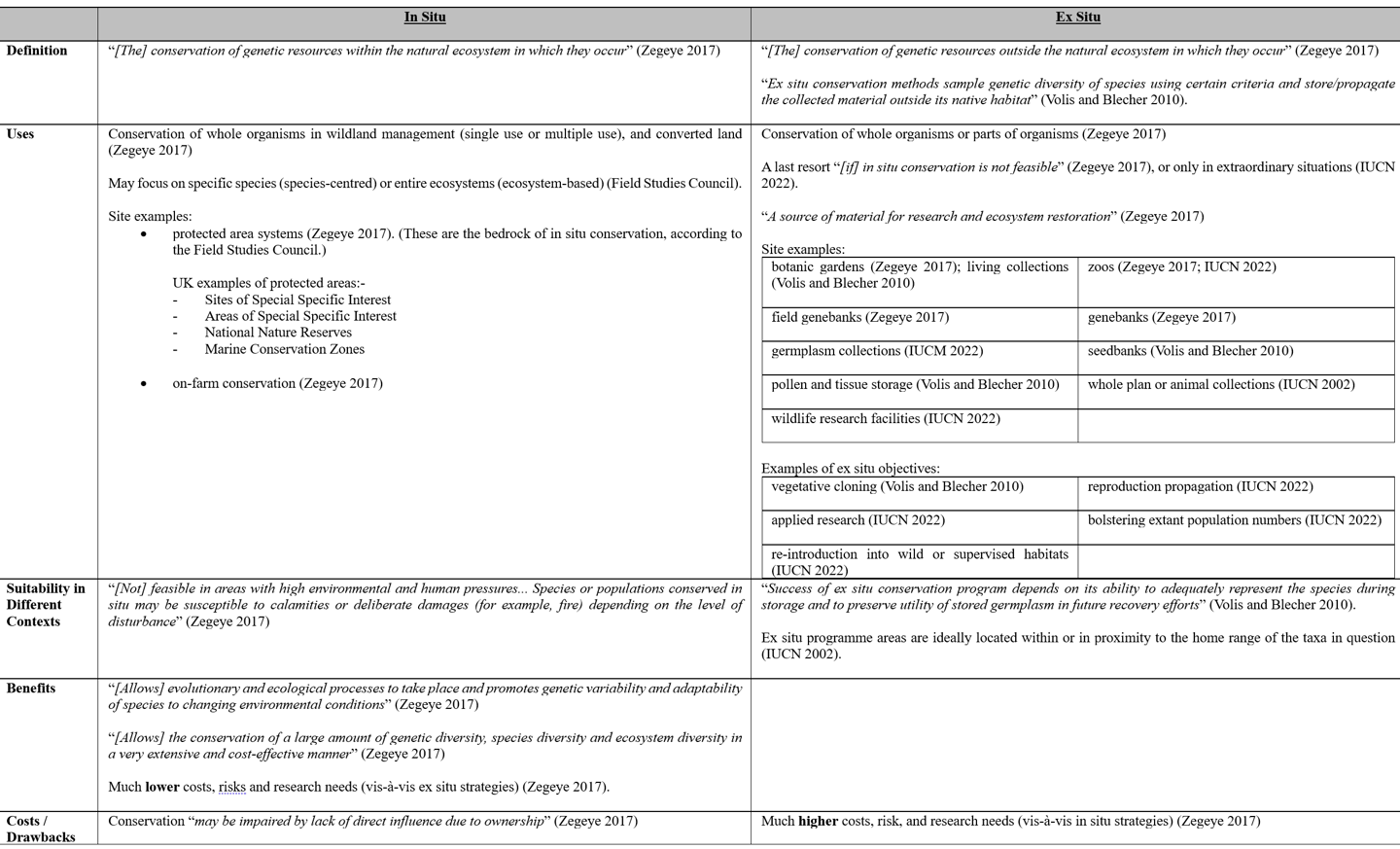Comparison and Potential Integration of In Situ and Ex Situ Conservation Strategies
6/22/20231 min read




The IUCN’s One Plan approach calls for the harmonization of conservation strategies for species both in the wild and under human control, including the fusion of in-situ and ex-situ conservation schemes (Schwartz et al 2017).
Such integration is already in practice with varying degrees of success. Programs such as reintroduction, head-starting, supplementation, and rescue/rehabilitation/release, are extant examples of in situ-ex situ integration, and such programs could greatly benefit from holistic centralized databases such as the Zoological Information Management system, for continued monitoring and study of translocated species (Schwarz et al 2017). Volis and Blecher (2010) further propose a complementary ex situ-in situ strategy in which ex situ collections are introduced and maintained within natural or semi-natural in situ habitats with “a close environmental match” (Volis and Blecher 2010:2445).
The integration of both approaches is said to secure the protection of the largest possible variety of biological diversity, “minimize the risk of genetic erosion”, and “achieve the most stable and cost-effective conservation effort for a given genepool under locally prevailing conditions” (Zegeye 2017:6).
References:
IUCN. (2002). ‘IUCN technical guidelines on the management of ex-situ populations for conservation’.
Field Studies Council. ‘In-situ conservation Management’ (n.d.)
Schwartz, K.R., E.C.M. Parsons, L. Rockwood, and T.C. Wood. (2017). ‘Integrating in-situ and ex-situ data management processes for biodiversity conservation’. Frontiers in Ecology and Evolution 5 2017, p.120.
Volis, S. and Blecher, M. (2010). ‘Quasi in situ: a bridge between ex situ and in situ conservation of plants’. Biodiversity and Conservation 19 2017, pp.2441–2454.
Zegeye, H. (2017). ‘In situ and ex situ conservation: Complementary approaches for maintaining biodiversity’. IJRES 4 2017, pp.1–12.